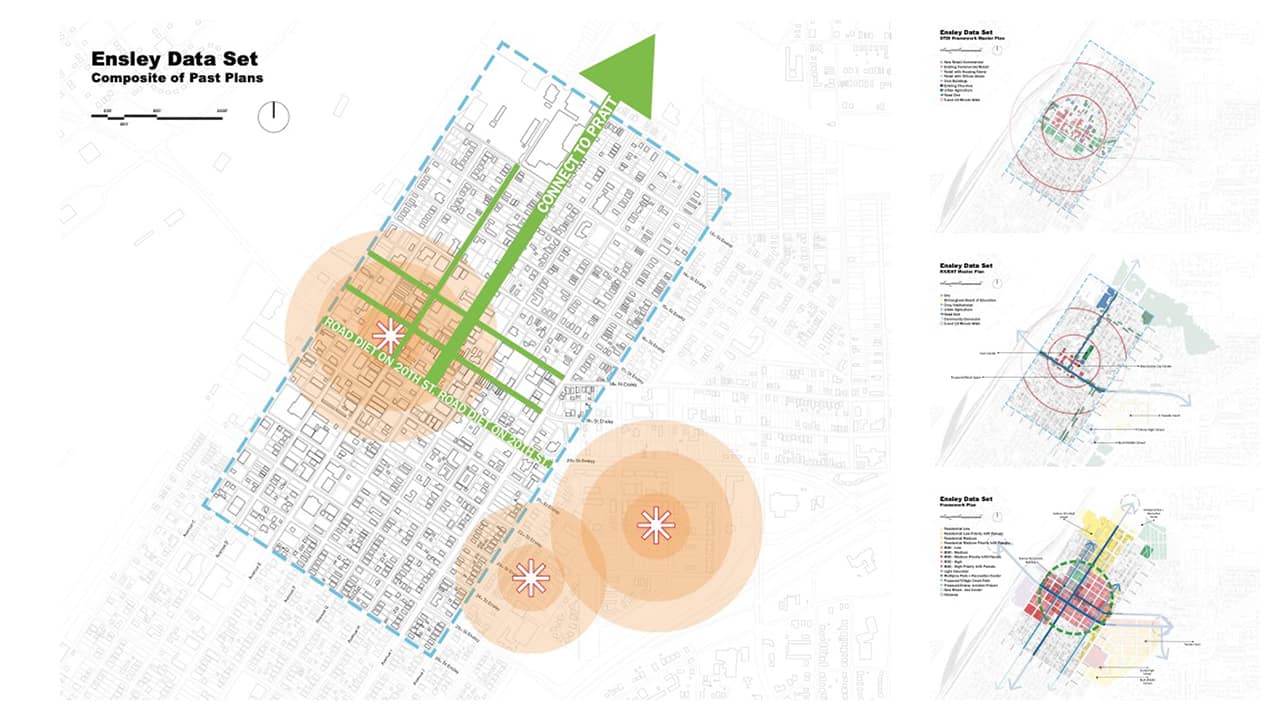Urban Studio Addresses Birmingham’s Historic Ensley Neighborhood

For decades, the ten-story abandoned Ramsay-McCormack building loomed over the surrounding neighborhood of Ensley as a constant visual reminder of the economic and social decay that had inflicted this once vibrant, but now long-neglected, historic area of Birmingham, Alabama. In an attempt to remedy the situation, the City of Birmingham contracted with Ensley District Developers, LLC (EDD) in 2019 to renovate the iconic structure and attract much-needed economic activity to the downtown area of Ensley. EDD reached out to the Auburn University Center for Architecture and Urban Studies, more familiarly known as Urban Studio, to help them undertake a larger neighborhood planning study that could potentially bolster the energy of the Ramsay-McCormack project.
The Urban Studio’s efforts began in a Spring 2021 semester seminar course where 5th year students engaged in an initial urban design analysis of a fifty-block study area centered on the Ramsay-McCormack building. The student work comprised extensive mapping, photo-documentation, and analytical drawing to better understand the existing conditions within the study area and begin the identification of opportunities and challenges for revitalization. During that time, Urban Studio faculty and two students were participating in a monthly Zoom meeting with local stakeholders previously arranged by EDD in an effort to share the progress on the Ramsay-McCormack effort with the broader community.
The Urban Studio structures spring semester so that fifth-year students undertake professional internships with local architecture firms, and in March of that semester, as most of these students began their internships, the Center itself hired two of these students as interns to continue the Ensley work beyond the constraints of the academic schedule. A grant funded by the PNC Foundation’s Greater Alabama regional office in Birmingham provided support for the student interns’ work, which consisted of refining and improving the graphic presentation of all materials created previously by their classmates as well as reviewing all previously existing plans for Ensley over the course of the past two decades. Given that none of the plans had come to fruition, it was decided by the project team that rather than develop another plan, they should instead develop a strategy by which on-the-ground results could be visualized, and hopefully realized (similar to the on-going work with the Ramsay-McCormack building).
The urban design strategy sought to leverage 1) a key set of grassroots community development efforts already occurring; 2) several existing assets in the neighborhood; 3) two new development proposals by identifying a singular street corridor that connected all these items, and to then focus all further efforts in that corridor. The student interns proceeded with an approach known as “tactical urbanism,” a method where temporary and quickly realized actions are accepted by the community and implemented through design interventions such as parklets, public spaces for art display and/or musical performance, and street crosswalks and plantings. The proposals, interventions that provided public places for the community to come together, were successfully presented by the student interns at an outdoor community event arranged by EDD in early summer. Currently the work continues in the Urban Studio fifth-year student coursework this fall semester 2021.
See more in:
AOI Archive,
Student Experience,
Student Work,
Urban Studio